Uğur Teğin
Genetically programmable optical random neural networks
Mar 19, 2024Abstract:Today, machine learning tools, particularly artificial neural networks, have become crucial for diverse applications. However, current digital computing tools to train and deploy artificial neural networks often struggle with massive data sizes and high power consumptions. Optical computing provides inherent parallelism and perform fundamental operations with passive optical components. However, most of the optical computing platforms suffer from relatively low accuracies for machine learning tasks due to fixed connections while avoiding complex and sensitive techniques. Here, we demonstrate a genetically programmable yet simple optical neural network to achieve high performances with optical random projection. By genetically programming the orientation of the scattering medium which acts as a random projection kernel and only using 1% of the search space, our novel technique finds an optimum kernel and improves its initial test accuracies 7-22% for various machine learning tasks. Our optical computing method presents a promising approach to achieve high performance in optical neural networks with a simple and scalable design.
Machine Learning with Chaotic Strange Attractors
Sep 23, 2023Abstract:Machine learning studies need colossal power to process massive datasets and train neural networks to reach high accuracies, which have become gradually unsustainable. Limited by the von Neumann bottleneck, current computing architectures and methods fuel this high power consumption. Here, we present an analog computing method that harnesses chaotic nonlinear attractors to perform machine learning tasks with low power consumption. Inspired by neuromorphic computing, our model is a programmable, versatile, and generalized platform for machine learning tasks. Our mode provides exceptional performance in clustering by utilizing chaotic attractors' nonlinear mapping and sensitivity to initial conditions. When deployed as a simple analog device, it only requires milliwatt-scale power levels while being on par with current machine learning techniques. We demonstrate low errors and high accuracies with our model for regression and classification-based learning tasks.
Scalable Optical Learning Operator
Dec 22, 2020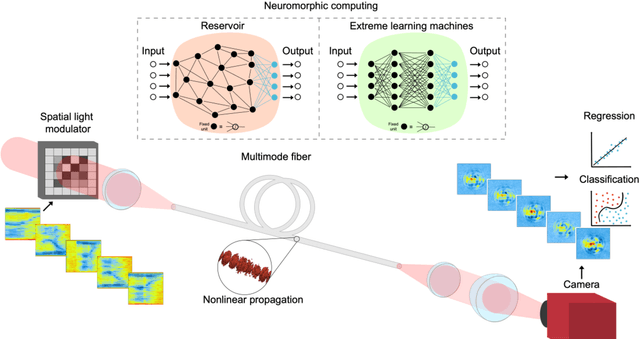
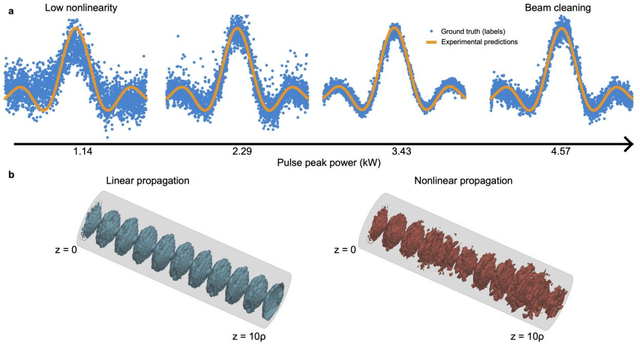


Abstract:Today's heavy machine learning tasks are fueled by large datasets. Computing is performed with power hungry processors whose performance is ultimately limited by the data transfer to and from memory. Optics is one of the powerful means of communicating and processing information and there is intense current interest in optical information processing for realizing high-speed computations. Here we present and experimentally demonstrate an optical computing framework based on spatiotemporal effects in multimode fibers for a range of learning tasks from classifying COVID-19 X-ray lung images and speech recognition to predicting age from face images. The presented framework overcomes the energy scaling problem of existing systems without compromising speed. We leveraged simultaneous, linear, and nonlinear interaction of spatial modes as a computation engine. We numerically and experimentally showed the ability of the method to execute several different tasks with accuracy comparable to a digital implementation. Our results indicate that a powerful supercomputer would be required to duplicate the performance of the multimode fiber-based computer.
Multimode Fiber Projector
Jun 29, 2019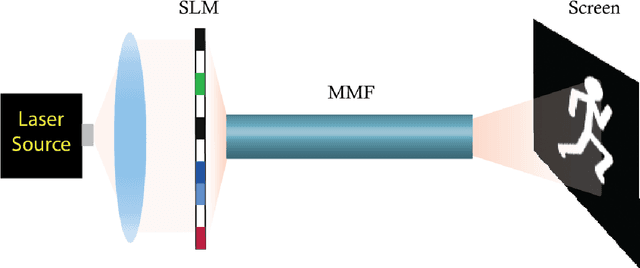
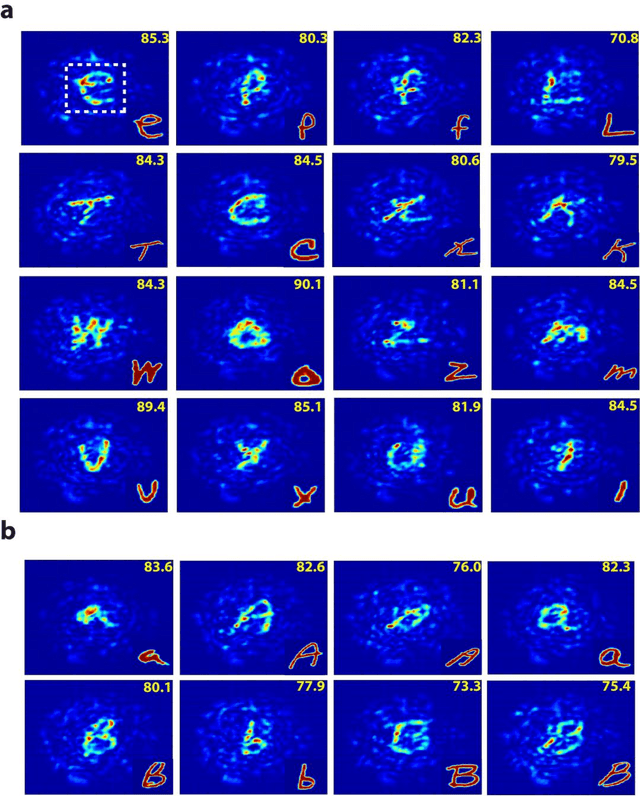
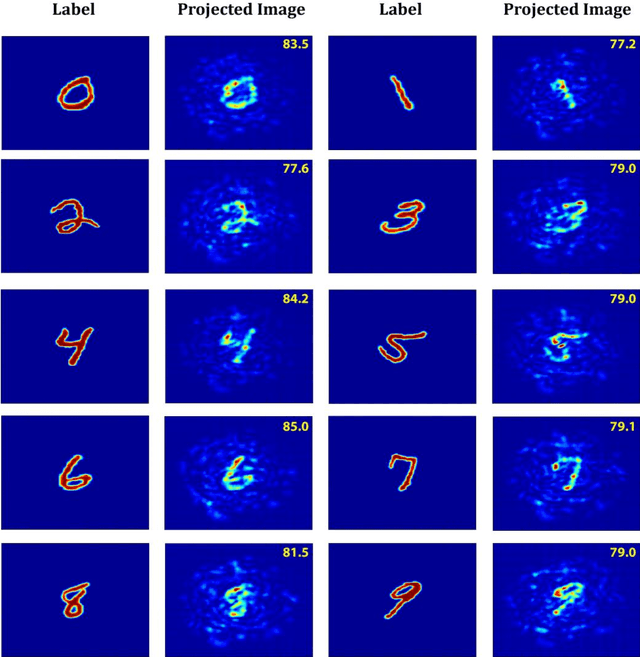

Abstract:Direct image transmission in multimode fibers (MMFs) is hampered by modal scrambling inside the fiber due to the multimodal nature of the medium. To undo modal scrambling, approaches that either use interferometry to construct a transmission matrix or iterative feedback based wavefront shaping to form an output spot on the camera have been proposed and implemented successfully. The former method entails measuring the complex output field (phase and amplitude) using interferometric systems. The latter, requires scanning the spot by phase conjugation or iterative techniques to form arbitrary shapes, increasing the computational cost. In this work, we show that by using neural networks, we are able to project arbitrary shapes through the MMF without measuring the output phase. Specifically, we demonstrate that our projector network is able to produce input patterns that, when sent through the fiber, form arbitrary shapes on the camera with fidelities (correlation) as high as ~90%. We believe this approach opens up new paths towards imaging and pattern projection for a plethora of applications ranging from tissue imaging, surgical ablations to virtual/augmented reality.
 Add to Chrome
Add to Chrome Add to Firefox
Add to Firefox Add to Edge
Add to Edge